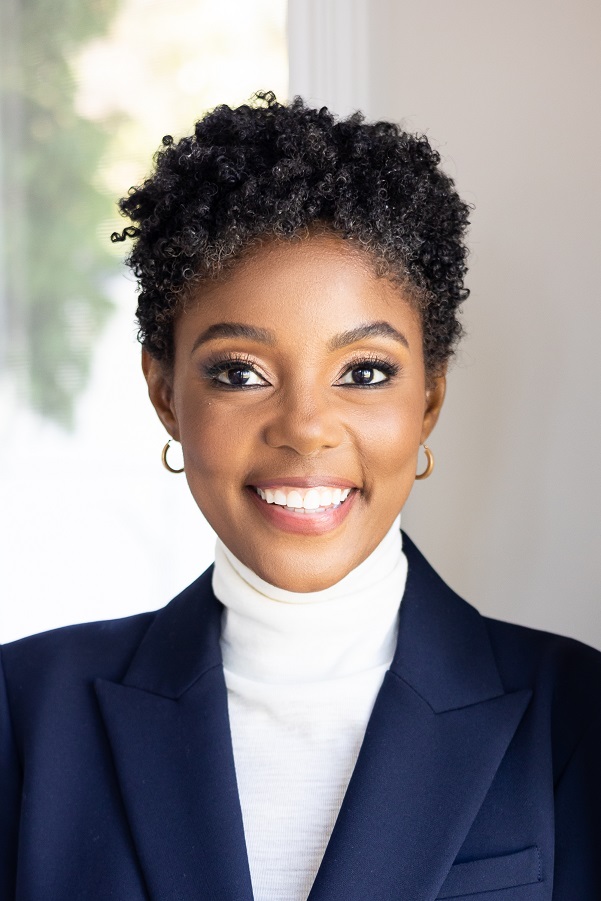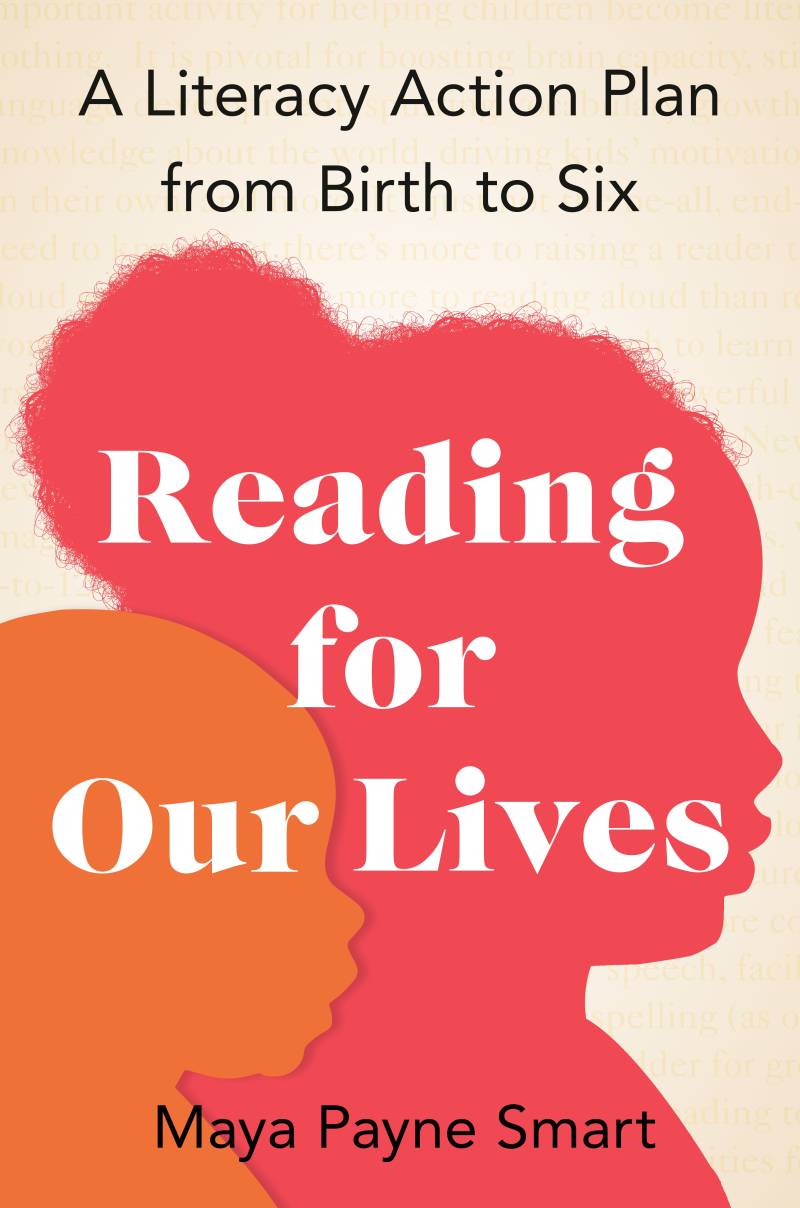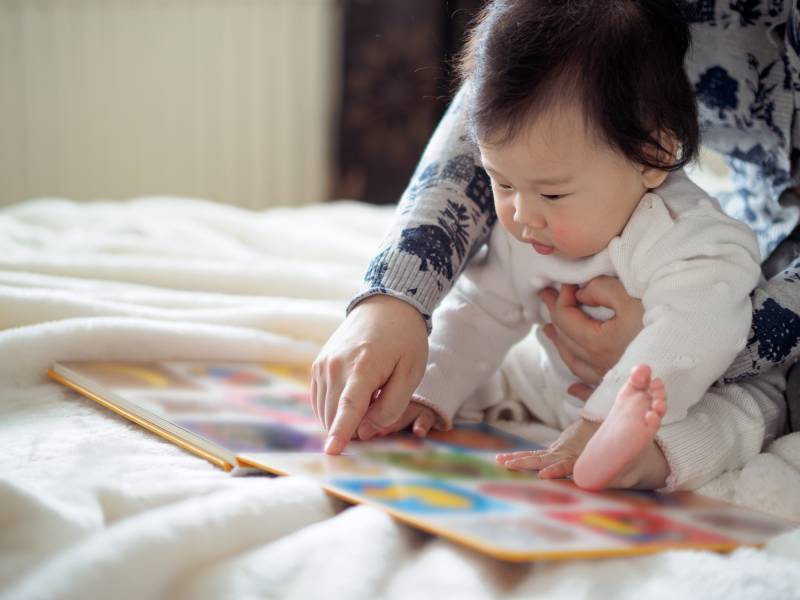So we must have the awareness to let a child’s age or language ability affect the content and tenor of our speech. Studies provide evidence that infants and young toddlers, for example, benefit from conversations about the here and now with us pointing and gesturing to label objects in our immediate surroundings or on the pages of books we’re reading together. And parentese is the speaking style of choice. Slower, higher pitched, and more exaggerated than typical speech, it’s been thought to advance infants’ language learning because of the ways it simplifies the structure of language and evokes a response from babies.
With older toddlers and preschoolers, we should keep examining what we’re saying and how, but update the range of things we consider. It’s no longer necessary to speak at a slow pace or nearly an octave higher than normal to aid a child’s language development. By 30 months, the variety and sophistication of parents' word choices may have a greater influence on kids’ vocabulary growth. By 42 months, talking about things beyond the present, such as delving into memories of the past or discussions of what will happen in the future, is positively related to kids’ vocabulary skills a year later.
While it’s unnatural and unrealistic to monitor yourself all day, the thing to remember is that our words and responsiveness fuel powerful learning for kids. Set aside ten minutes a day of mindful communication, focusing on your baby, your words, and the interplay between them. Over time the focused practice will create habits that spill over into other conversations, too.
Learning Takes Time — and Space
We live in a catch-up culture, where people feel perpetually behind and forced to hustle near the finish line after being waylaid by hurdle after hurdle. This contributes to the (false) belief that we can make up in intensity what we lack in good pacing. But we can’t cram kids’ way to reading.
Ask any learning scientist about the relative merits of massing study together versus spreading it out over time. They’ll tell you that spacing between sessions boosts retention of the material. The proof of the principle (known as spaced learning, interleaving, or distributed practice) shows up all over the place. Numerous studies across the human life span, from early childhood through the senior years, have documented its power. And there’s evidence of the benefits of spaced study across a wide range of to-be-learned material, such as pictures, faces, and foreign language vocabulary and grammar.
Even learners taking CPR courses performed better if their classes were spaced out. So if you want your child to remember what you’re teaching, digging into it for ten minutes a day for three days likely will beat a half-hour deep dive. The spacing effect is among the field of psychology’s most replicated findings.
Incidentally, a study found that a bias for massed learning emerges in kids in the early elementary school years, so you’re in good company if the approach feels counterintuitive. In the preschool years, the kids were as likely to think learning something bit by bit over time was as effective as learning it in a clump. During elementary school, though, the kids started predicting that massed learning would be better at promoting memory than spaced learning.
Maybe the teaching methods employed in so many classrooms give kids (and parents) the impression that repetition, repetition, repetition in one sitting is the way knowledge sticks in memory. Want to learn your spelling words? Write them over and over again in different colored pencils. Want to practice your handwriting? Fill that page with well-formed letters.
Spacing things out may feel inefficient, but it’s more effective, more fun, and a better fit for daily life with young kids. Parents have a natural advantage in teaching more gradually, because we are with kids for hours a day over the course of years. We aren’t under intense time pressure, at least over the long term, removed as we are from the confines of a school day or school year. Nor do we have to find a way to meet the needs of twenty-five kids or more at once.
And keep in mind that the lessons we give needn’t be formal. Teaching young children often looks like talking, playing, and singing. I once ordered a home spelling program that included what felt like 50 million individual magnetic letter color-coded index cards, and scripted teaching procedures. I was so tired from separating and organizing all the materials that I never got around to working through the curriculum with my daughter.
Ultimately, conversation over a few games of prefix bingo one week taught her more about prefixes, suffixes, and units of meaning within words than the elaborate curriculum did. Why? Because that was the method I enjoyed and followed through on — the one that worked within the context of our relationship and our attention spans. She loves board games; I love talking about words. Win-win. The takeaway: do what works for you, and do it a little at a time.
The More Personal the Lesson, the Better
Helping your child learn to read requires making decision after decision. Which letters or words to teach? Which song to sing or story to tell? When making the calls, err on the side of making the lessons themselves personally meaningful for your child. Sometimes it’s as straightforward as teaching the child the letters in their name first, making up songs and stories featuring their pets, or choosing vocabulary words from their favorite books. Sometimes it’s as deep as practicing fluency by reading aloud texts that affirm and sustain a child’s cultural heritage or community.
To help conceptualize this, researchers have defined three levels of personal relevance, from mere association to usefulness to identification. When a reading lesson centers on a passage about the student’s sport of choice (say, soccer), that’s making a personal association. If you can make it clear how the lesson itself is advancing a goal the child is after (like joining wordplay with older siblings), even better. But if you can make the activity resonate with the child’s sense of self, you’re really cooking with grease. This is what’s going on when a little one named Anna sees the letter A and says, That’s my letter! She’s owning it — and identifying with it. It matters to her and she learns it quickly.
The power of personal meaning also helps explain why parents so often find that something that worked like a charm with one child falls flat with another. Kids’ associations, judgments of usefulness, and identities vary widely, even when they grow up under the same roof. Locking in on what makes your individual learner tick and facilitating resonant experiences just for them is golden.
Luckily, you have a built-in feedback mechanism for determining what’s working: your child. Even infants express preferences. A little one might reach for the same book with bold illustrations or lift-up flaps over and over again. You may also find that what gives the lesson meaning is you — your demeanor, your engagement, and your responsiveness can be tremendous motivators.
Praise the Process
You’re voluntarily reading a parenting book, so I’ll venture that you value learning and have confidence that you’ll reap some benefit from the effort you put into acting on the tips compiled here. You believe that you can know more, teach better, and make an impact. And I imagine that you want your child to feel the same sense of self-assurance as they pursue their own challenges.
One way to cultivate that can-do spirit is by cheering on their hard work, focus, and determination by name. Instead of giving generic praise like “You’re so smart,” say specifically what you loved about how they learned — not just the results. For example, if your little one is beginning to write letters: “Great job picking up the pencil and writing. I see you working to hold it in your grasp.” You’ll celebrate their work and lay the motivational track for other efforts to come.
Research by psychologist Carol Dweck and others has found evidence that when parents praise kids’ effort in the learning process — not outcomes — it impacts their kids’ belief that they can improve their ability with effort. With that growth mindset, they are more likely to think they can get smarter if they work at it, a trait that boosts learning and achievement.
In a longitudinal study, Dweck and colleagues traced the whole path of these relations, from parents uttering things like “Good job working hard” when their kids were 1 to 3 years old, to testing those same kids’ academic achievement in late elementary school. They found evidence that this process-related praise predicted a growth mindset in children, which contributed to strong performance in math and reading comprehension later on in fourth grade. The study also found evidence that parents established their praise style (more process-focused, or less so) early on. So learn how to give meaningful compliments. The positive vibes leave lasting impressions.
When in Doubt, Look It Up
This was my dad’s go-to saying when I peppered him with questions as a kid. A good reference guide, in our case a giant Webster’s dictionary that he kept on a wooden stand in his office, was always the first stop for a spelling, definition, or example. His words remain with me, reminding me how important it is to continue learning as we endeavor to teach our kids. My dad didn’t have all the answers and wasn’t afraid to learn alongside me.
When it comes to nurturing and teaching reading, we should stay curious and work to deepen our content knowledge, versus falling back on instructional methods that are more familiar than effective. For example, parents often do things like tell kids to sound out words like right, people, and sign that can’t be, well, sounded out. These words clearly don’t feature direct letter-sound matches, but our default response to any decoding question, phonetic or not, is “sound it out.” The lesson a child needs in those instances isn’t how to blend this letter sound into that one, but how the English language and its writing system work overall.
Similarly, if we decide to teach spelling, we should make it a priority to learn something about word origins and get a handle on conventional letter-sequence patterns. Having a child write a word over and over again is one method, but it’s one you’ll probably feel more comfortable letting go of as you know more about why we spell how we do. When we’re well informed about how written English works and how reading develops, we can take advantage of the countless teachable moments in everyday life.
 Maya Payne Smart is a writer, parent educator and literacy advocate who has served on the boards of numerous library and literacy organizations. She and her family live in Milwaukee, where she serves as affiliated faculty in educational policy and leadership in the College of Education at Marquette University. Her website, MayaSmart.com, publishes new book lists, literacy activities, and other free family resources weekly to help parents play their dual roles as first teachers and educational advocates.
Maya Payne Smart is a writer, parent educator and literacy advocate who has served on the boards of numerous library and literacy organizations. She and her family live in Milwaukee, where she serves as affiliated faculty in educational policy and leadership in the College of Education at Marquette University. Her website, MayaSmart.com, publishes new book lists, literacy activities, and other free family resources weekly to help parents play their dual roles as first teachers and educational advocates.
 These touchstones are research-backed and parent-approved. Personally, I’ve found that returning to these principles, even now that my daughter is a strong, fluent, and independent reader, still makes a difference for her, me, and our relationship. Ultimately, they are calls to be a more patient, more responsive, and more purposeful parent in every context.
These touchstones are research-backed and parent-approved. Personally, I’ve found that returning to these principles, even now that my daughter is a strong, fluent, and independent reader, still makes a difference for her, me, and our relationship. Ultimately, they are calls to be a more patient, more responsive, and more purposeful parent in every context.


